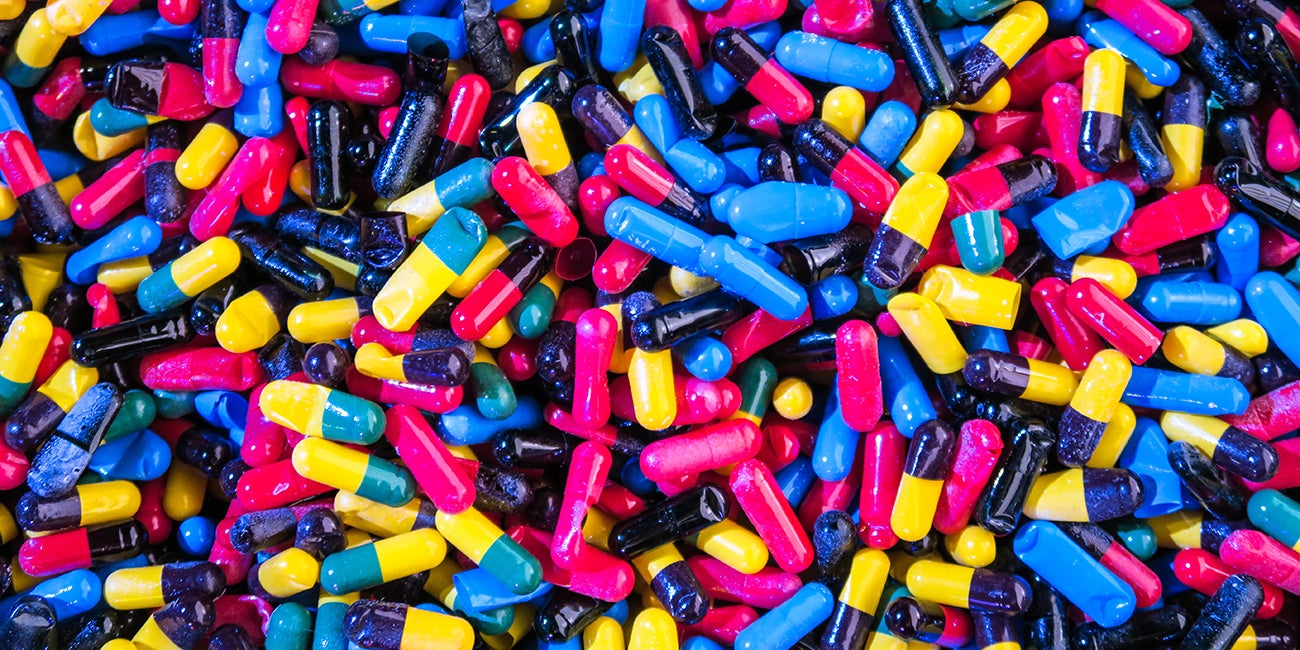Five Questions with Monica Hubbard
In our “Five Questions” feature we ask scholars, activists and public officials five short questions about their work (and other things).

Monica Hubbard is an Assistant Professor of Public Policy and Administration in Boise State University’s School of Public Service. Dr. Hubbard completed her M.S. and Ph.D. degrees at Oregon State University. At Boise State, Dr. Hubbard teaches teaches courses on Environmental Politics, Public Policy Processes, Policy Analysis, the Public Policy and Administration’s capstone. Dr. Hubbard’s research interests and foci are in the fields of environmental, natural resources, energy, and emerging technological and environmental issues.

You’ve been studying something you call “Contaminants of Emerging Concerns,” or CECs, in our water supply. What are CECs?
The definition of CECs keeps evolving, but they are basically natural or man-made micro-pollutants that we, as a society, have not tracked or managed in the past, but have known negative ecological or human health impacts. Examples include Teflon and pharmaceutical drugs, which have been found in streams, lakes, oceans, snow, and even the polar ice caps. They also exist in soil, air, and plant and animal tissue. Some CECs don’t seem to do much, but others, like pharmaceutical drugs, have been known to harm fish, wildlife, and insects. These pollutants come from many places, including farm fields, manufacturing, and even our homes. My research focuses on known and emerging contaminants found in water. Some of these are already regulated, but due to things like climate change and population growth, are increasingly more difficult to manage.
It sounds like this has something to do with the way we dispose of those pill bottles and what’s inside of them. Should we stop throwing those in the garbage or flushing them?
It sure does. Most of us don’t think of it, but how we dispose of our unused pharmaceutical drugs matter. Many of these drugs don’t disappear but stay as active pharmaceutical ingredients (APIs). And when in our waters, they have known negative impacts on the ecosystem, including fish and wildlife. Research is in its early stages, but there are numerous questions about their impacts on human health. Overall the scope of the problem is bigger than we think. It’s estimated that only two percent of Americans use all of their prescription drugs. Considering that on average each American has about 12 prescriptions per year, that is a lot of unused drugs. This doesn’t even include over-the-counter medications.
There have been efforts to provide residents options to dispose of their unused drugs, but due to a complex regulatory system designed to manage controlled substances, it’s not as easy as it sounds. Studies show that between 85 to 91 percent of Americans use their household trash and sewer to dispose of their medications. Disposal in the sewer sends these active pharmaceutical ingredients right to our wastewater treatment facilities or, if a household uses a septic system, to the groundwater. The trash sounds like a good alternative, but in reality, it goes to a landfill, which produces leachate that ends up in water systems. I don’t want to knock wastewater treatment facilities. In fact, they treat our water to amazingly high standards. When you think about conventional pollutants, water that comes out of wastewater treatment facilities is cleaner than what we swim in. The challenge is when they were built CECs weren’t on the radar and they weren’t designed to treat or remove micro-contaminants, like pharmaceutical ingredients. At the same time, I don’t want people to stock-pile their unused medications at home as this can lead to intentional or unintentional misuse. I better stop there, or I can go on forever. Which explains why no one at dinner parties asks me about my work.

What are some of the most interesting things researchers have found from studying CECs?
Now that’s a great question. Because we are learning more and more about CECs and the research is relatively new, it seems like everything is interesting. Because analytical techniques are so much better and cheaper than before, a couple of things of interest are their prevalence throughout the U.S., and their fate and transport. Research on their ecological impacts is interesting, but more recent research on human health impacts is really interesting and important. Researchers are now starting to examine what’s called effects-based monitoring, which examines the ecological effects of all the CECs present in an environment. Instead of examining one CEC, such as PFAS, on a species, this looks at how these substances interact. All interesting, but I’m fascinated with how we as a society address CECs in our environment. How do we perceive the risks of CECs? And what are the role and influences of policy and politics? Can we manage these using existing policies? One recent example is out of Loretto, Tennessee. There, local law enforcement asked residents not to flush their drugs down the toilet to prevent the creation of “meth-gators.” Obviously, law enforcement wasn’t serious, but that little Facebook post was successful at getting the issue on the public’s agenda.
What are some major CECs in the Treasure Valley? What’s being done about them?
Great question, and one I don’t have a great answer for. The challenge with CECs is most are not regulated, and as such we don’t always test for them. Active pharmaceutical ingredients (APIs) are definitely here. What is being done about it? Now that is complicated. Treatment to remove the APIs is extremely difficult and cost-prohibitive, so keeping these drugs from entering the water system is the best option. Doing so is easier than it sounds and the Treasure Valley shares the same challenge with unused pharmaceutical drugs as everywhere else in the U.S. – conflicting issues, policies and politics. Unused pharmaceutical drugs are dangerous if stockpiled in the house; children and adults can accidentally ingest these which can lead to death. And pharmaceutical drugs are a contributor to the opioid epidemic. As a result, many public agencies have promoted for their disposal, but as I mentioned, most people use their home trash and sewer. Efforts to create disposal options, usually drop-off boxes, that keep these out of the house and the water have been limited. Fortunately, we have a few community partners that installed boxes for Treasure Valley residents to drop-off their unused pharmaceutical drugs. It looks like there are about a dozen locations in the valley. It’s unclear how often Treasure Valley residents use these drop-off boxes, but data suggests, it is limited. Perhaps we need law enforcement to create a meth-gator equivalent for the Treasure Valley.

Your dog Pickles is kind of a star on campus. What’s an ideal day for him look like?
Thank you for asking, he was starting feel left out. Pickles is a social butterfly and a typical ideal day means being around friends. This starts with a long morning hike in the foothills with Pepper. With some luck, he will run into other friends, like Aldo and Frankie. After some breakfast, he likes to help me get ready for work by hiding my shoes outside. Ideally my leather shoes in the rain. Assuming I can find my shoe, Pickles goes with me to campus to hangs out in the office. During which he gets countless treats and pets from students and faculty alike. Using his puppy-dog eyes superpowers, Pickles convinces me to take him out for a walk around campus so he can make new friends. After helping me grade (Pickles says everyone deserves an A) he goes home. As soon as he is there, he likes to wake up his older sister – a cat named Chuppa – by barking in her face and biting her tail. That is a good day for Pickles.